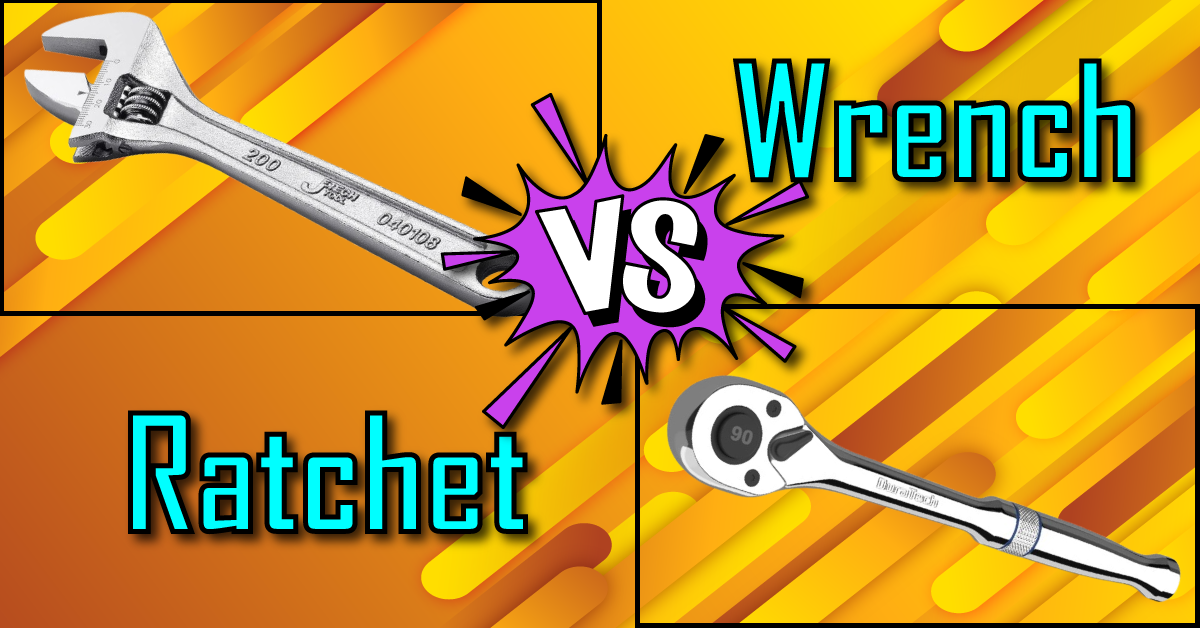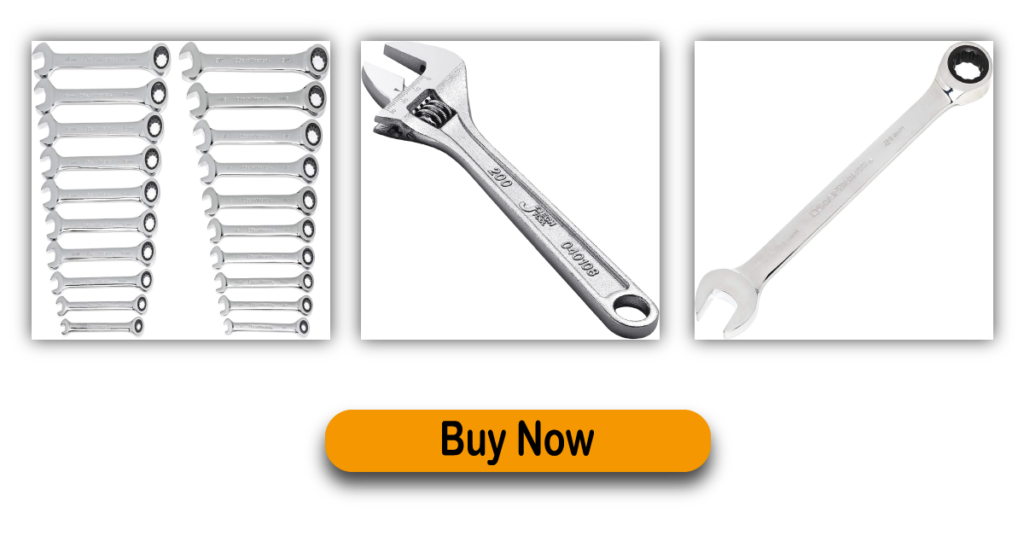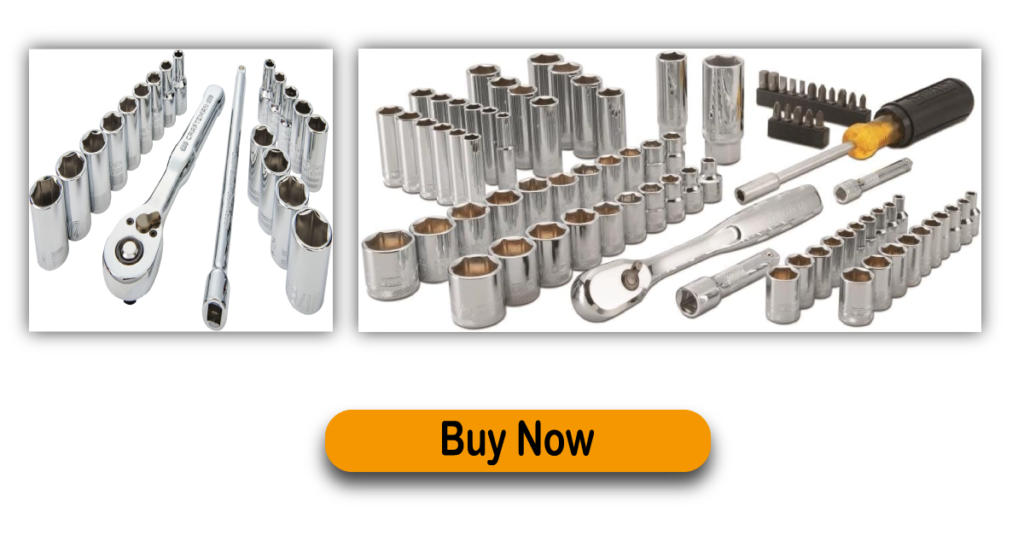Wrenches and Ratchets
Wrenches and ratchets are key tools in any kit. They are useful but serve different purposes.
Must-Have Tools in Your House If You Work Regularly
A wrench is simple and easy to use. It has a fixed or adjustable jaw. You use it to tighten or loosen bolts and nuts.
A ratchet is more advanced. It has a gear that allows turning without lifting the tool. This makes it faster for repetitive tasks.
Knowing when to use each tool saves time. It also makes your work easier.
Introduction to Tools
Tools are part of everyday life. They help us fix, build, and maintain things.
Wrenches and ratchets are common tools. They may look alike, but they work differently.
In this blog, we will learn their differences. We will see why they matter and their types.
Let’s get started!
Importance in Mechanics
Wrenches and ratchets are important for mechanics. They help tighten and loosen nuts and bolts.
Without them, many tasks would be difficult. Mechanics use these tools for repairs and assembly.
They save time and effort. Learning to use them is a must for any mechanic.
Common Types
Wrenches come in many types. Common ones are open-end, box-end, and combination wrenches.
The open-end wrench has a U-shaped jaw. It grips two sides of a bolt.
The box-end wrench has a closed loop. It surrounds the bolt or nut completely.
A combination wrench has both open and closed ends. It is flexible and useful.
Ratchets also have types. The most common is the socket ratchet.
It has a handle and a socket. The socket fits over the nut or bolt.
Ratchets are quicker and come in various socket sizes. They are great for many tasks.
Wrench Basics
Wrenches are simple but vital tools. Knowing their basics is important for everyone.
Definition and Design
A wrench gives grip and torque. It helps turn nuts and bolts.
It has a fixed or adjustable opening at one end. This fits different fasteners.
The other end is a handle. The handle helps apply force easily.
Types of Wrenches
- Wrenches come in many types. Each type has a special use.
- The most common are open-end, box-end, and combination wrenches.
- Open-end wrenches have U-shaped ends. These grip two sides of a bolt or nut.
- Box-end wrenches have closed loops. They provide a firm grip on the fastener.
- Combination wrenches have both ends. One is open, and the other is a box-end.
These wrenches are useful for many tasks.
Ratchet Basics
A ratchet is a handy tool. It makes tightening and loosening bolts quick and easy.
Unlike a wrench, it has a mechanism for smooth turning.
Definition and Design
A ratchet has a handle and a socket. The socket fits over the fastener.
The handle moves in one direction. This motion tightens or loosens the bolt.
The mechanism stops it from moving the other way.
Most ratchets have a switch to change direction. The handle length gives more or less leverage.
Types of Ratchets
Ratchets come in different types. Each has a purpose:
- Standard Ratchet: Good for everyday use.
- Flex-Head Ratchet: Has a head that bends for tight spaces.
- Stubby Ratchet: Short handle for small spaces.
- Long-Handle Ratchet: Gives more force for tough tasks.
Each type is useful for specific jobs. Choose the right one based on the task and space.
Primary Differences
Wrenches and ratchets are different tools. Both are useful but have unique purposes.
Mechanism and Functionality
A wrench is simple and easy to use. It turns bolts and nuts with torque.
Most wrenches have fixed or adjustable jaws. Common types are open-end, box-end, and adjustable wrenches.
A ratchet works in one direction only. It has a handle and a socket.
The socket turns freely one way but locks the other way. This makes work faster and easier.
Summary:
| Tool | Mechanism | Function |
|---|---|---|
| Wrench | Fixed or adjustable jaw | Turns objects with torque |
| Ratchet | Handle and socket | Continuous turning in one direction |
Usage Scenarios
Wrenches are best for strong grip and high torque. Use them for plumbing, cars, or machines.
- They work well in open spaces. They are simple and effective.
- Ratchets are great for tight spots. They save time with quick turning.
- Use ratchets for car repairs, furniture, or small areas. They work without lifting the tool.
In Summary
- Wrenches: Strong grip, high torque, best for open spaces.
- Ratchets: Quick turning, ideal for tight areas, saves time.
Advantages of Wrenches
- Wrenches are strong and simple. They are great for many repair jobs.
- They give a good grip on fasteners. This helps with control and precision.
- Wrenches are durable and easy to use. They do not have complex parts.
- Choose a wrench for tasks needing high torque and accuracy.
Precision and Control
Wrenches offer great precision and control. They let you apply just the right amount of force.
This is important for tasks needing delicate handling. Over-tightening can cause damage, but wrenches help avoid it.
The firm grip of a wrench gives you confidence. It reduces slipping and lowers the risk of injury.
With a wrench, your work is neat and accurate.
Versatility
Wrenches are versatile tools. They come in many sizes and types.
You can use them for cars, furniture, and more. Adjustable wrenches fit different bolt sizes.
This means you need fewer tools. It saves space and makes your toolkit efficient.
| Type of Wrench | Use Case |
|---|---|
| Open-End Wrench | Plumbing, car repairs |
| Box-End Wrench | Full grip on bolt sides |
| Adjustable Wrench | Fits various bolt sizes |
- Wrenches are simple to use.
- They provide a strong grip.
- They are perfect for precise and delicate tasks.
Advantages of Using a Ratchet
Ratchets are helpful tools for many tasks. They offer speed, ease, and versatility.
Efficiency and Speed
A ratchet makes work faster and easier. It lets you:
- Tighten or loosen bolts quickly.
- Work in tight spaces.
- Use less effort to turn fasteners.
The ratcheting mechanism saves time. You don’t need to remove and reposition it after every turn. This is perfect for repetitive tasks.
Convenience
Ratchets are also very convenient. They provide:
- One-hand operation.
- Interchangeable sockets for different sizes.
- Less strain on your wrist and hand.
These features make ratchets ideal for both beginners and pros. You can quickly switch sockets to handle various fasteners.
Choosing the Right Tool
Picking the right tool makes your job easier. Understand the task to decide between a wrench and a ratchet.
Task Requirements
A wrench is simple and reliable. It’s great for tightening or loosening bolts. Use it for straightforward tasks like fixing a bicycle.
A ratchet is better for complex jobs. It allows continuous turning in tight spaces. It’s ideal for car engines and similar tasks.
User Preference
Your comfort matters too. Wrenches are easy to handle and need little upkeep.
Ratchets are faster and more versatile. They work well in tight areas and save time.
If you’re new to tools, start with a wrench. If you’re experienced, a ratchet may suit you better. Choose the tool that fits your skill and task needs.
Maintenance and Care
Taking care of your tools is important. It helps them last longer and work better.
Proper Cleaning
Clean your tools after each use. Wipe them with a clean cloth.
Use mild soap for tough dirt. Avoid abrasive cleaners. They can harm the surface.
For ratchets, clean the gears with a small brush. Add a few drops of oil to keep them smooth.
Storage Tips
Store tools in a dry place. Moisture causes rust.
Use a tool chest or pegboard to organize them. Keep wrenches and ratchets in separate spaces.
This prevents damage from friction. Tool covers add extra protection.
Simple care keeps your tools in great shape for years.
Frequently Asked Questions
What is a wrench used for?
A wrench turns nuts and bolts. It gives grip and leverage. It tightens or loosens fasteners.
How does a ratchet work?
A ratchet has a gear system. It moves in one direction. This makes tightening or loosening easy without lifting the tool.
Can a ratchet replace a wrench?
A ratchet can do many wrench tasks. But wrenches are better for some jobs and fasteners.
Which is better for tight spaces?
A ratchet is best for tight spaces. It saves time and effort by not needing repositioning.
Conclusion
Picking the right tool makes jobs easier. Wrenches and ratchets have different uses.
Wrenches are simple and precise. Ratchets are flexible and good for tight spaces.
Both tools are essential. Knowing their strengths helps you choose better.
Next time you need a tool, you’ll know which one to pick. Happy fixing!









